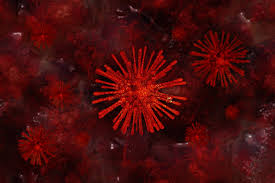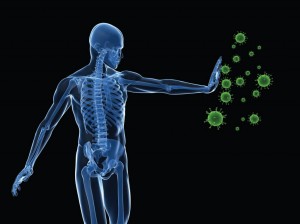In the quest to develop personalized cancer therapies, researchers are increasingly examining an individual’s immune response to cancer to find ways to tailor treatments.
The shift comes with the emergence of therapies designed to unleash the immune system on cancer cells. Five studies in the 27 November issue of Nature1–5 turn to the immune system to investigate which patients are likely to respond to cancer drugs that inhibit the activity of a protein called PD-1, and how tumours trigger immune responses. The approach is in contrast to earlier attempts at personalised therapies that focused on the tumour itself.
“We’re looking at a very different biomarker paradigm,” says Thomas Powles, an oncologist at the Queen Mary University of London, and lead author of one of the papers1. “We’re not focusing on the tumour cells, we’re focusing on the immune cells around the tumour.”
The PD-1 receptor on some T cells sends them into hibernation when bound to signaling protein PD-L1. This mechanism, which normally prevents autoimmune reactions, can be co-opted by opportunistic tumour cells to help them evade the immune system. Tumours that express PD-L1 are sometimes surrounded by a phalanx of impotent T cells.
Drugs that block PD-1 or PD-L1 can release those T cells and reactivating the immune system against the tumour. Those drugs have generated tremendous excitement for their ability to spark long-lasting responses in some patients with advanced cancers for which other treatments had fallen short.
But the drugs work for only a fraction of patients, and it is still unclear which cancers are susceptible. For example, Powles’s paper provides the first evidence that a drug that blocks PD-L1 may work in bladder cancer1, but early data from other studies suggest that prostate cancer may not be as vulnerable.
Signs of success
All of this has sent researchers scrambling to find ways to identify the patients and tumour types most likely to benefit from PD-1 therapy. Early efforts focused on measuring PD-L1 expression by tumour cells. But three of the five Nature papers instead explore the importance of PD-L1 expression on immune cells that have infiltrated the tumour1–3.
The findings fit with models of how PD-1 and PD-L1 suppress immune responses to cancer, says Suzanne Topalian, an oncologist at Johns Hopkins University in Baltimore, Maryland, who was not involved with the studies. But because different researchers and companies use different methods to measure PD-L1 expression, it is impossible to compare results across studies, she notes. That means it is too soon to discount earlier results from her lab and others finding a correlation between response to therapy and PD-L1 expression on tumour cells, she says6.
Antoni Ribas, a cancer researcher at the University of California in Los Angeles, argues that lack of PD-L1 expression on immune cells could be a sign that it is worth the added expense and toxicity to combine PD-1 drugs with another therapy that lures T cells to the tumour. But he and others warn against using the absence of PD-L1 expression to exclude patients from treatment with PD-1 therapies. “There is a certain percentage of patients whose tests are negative and they still respond to this drug,” says Topalian.
Beneficial mutations
Two other reports pinpoint how mutant proteins on mouse tumours alert T cells in the first place[4,5]. Both teams catalogued the mutated protein sequences that are recognized by T cells and used them to design personalized vaccines to boost immune responses to the tumours. The approach worked: most of the mice rejected their tumours.
Clinical trials are underway to test similar personalized vaccines in humans, says Robert Schreiber, a tumour immunologist at Washington University in St Louis, Missouri.
But even if the approach works, it leaves behind those who lack the mutations needed to recruit T cells, says Jedd Wolchok, a cancer immunologist at the Memorial Sloan Kettering Cancer Center in New York, who was not involved with the work. “The question then becomes: what do we do for the patients who don’t have these favourable mutations?”
Wolchok notes that some conventional therapies, such as radiation and classical chemotherapies, may help to alert the immune system to the tumour by introducing new mutations to the tumour genome. “Only by bringing all of this together are we going to make progress,” he says.







